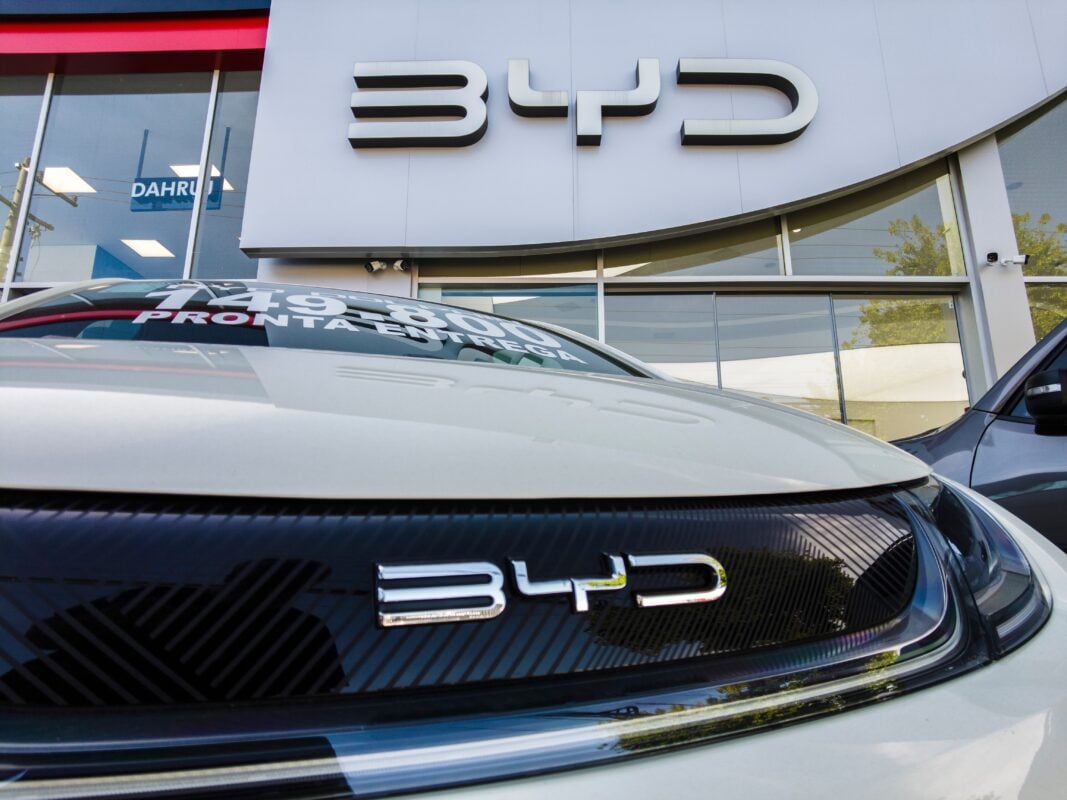TLDRs;
Contents
- Chinese EV makers reclaim 10.6% of Europe’s market, nearly matching pre-tariff levels from June 2024.
- BYD, Xpeng, and MG lead the surge with explosive sales across EU, UK, and EFTA nations.
- Local manufacturing in Europe helps Chinese automakers bypass steep EU tariffs and expand presence.
- China’s EV push mirrors Japanese, Korean strategies, starting with price, ending with local roots.
Chinese electric vehicle manufacturers have captured a 10.6% share of the European EV market in June 2025, their highest since June 2024, according to data from research firm Dataforce.
This figure excludes Sweden but includes the EU, UK, and EFTA countries. The milestone comes less than a year after the European Union imposed steep tariffs of up to 45% on Chinese-made EVs.
This resurgence was led by BYD, MG, and Xpeng, which saw impressive year-on-year sales increases. According to Jato Dynamics, BYD’s EV sales jumped 143% in the first half of 2025, while Xpeng’s skyrocketed by 328%. Other Chinese brands, including Leapmotor, also recorded gains.
Strategic Manufacturing Helps Dodge Tariffs
Faced with mounting regulatory barriers, Chinese automakers are turning to a familiar strategy, local production.
BYD is currently constructing a €4 billion factory in Hungary with an annual output capacity of 200,000 vehicles. This shift is aimed at permanently bypassing tariffs and strengthening brand presence within the continent.
Rather than slashing prices aggressively, Chinese firms have opted for more cautious pricing strategies, reportedly to avoid provoking backlash from European competitors. MG, for instance, diversified into hybrid and combustion models to offset tariff impacts, while BYD introduced plug-in hybrids alongside its EV lineup.
A Playbook Borrowed from Japan and Korea
The Chinese approach draws inspiration from successful market-entry tactics once employed by Japanese and Korean automakers.
In the 1980s, brands like Toyota and Hyundai faced similar trade tensions and consumer skepticism when entering Western markets. However, they overcame these barriers through local manufacturing and long-term brand-building.
Chinese manufacturers are now replicating this path. MG, for example, uses its British legacy to soften European resistance to Chinese-made vehicles, while others focus on building trust through tech innovation and after-sales support.
As Europe Recovers, Africa Beckons
While expanding in Europe, Chinese automakers are also eyeing Africa as their next frontier. Global restrictions and tariff threats have prompted brands like BYD, Chery, and Great Wall Motor to accelerate their push into South Africa, seen as a strategic gateway to the continent.
Despite challenges like unreliable power and limited EV infrastructure, automakers are banking on affordability to win over new consumers.
Nearly half of the 14 Chinese car brands now active in South Africa entered the market just last year, and more are on the way. As Tony Lao, CEO of Chery South Africa, noted in June, the country offers a mature financing ecosystem and discerning buyers,key ingredients for long-term growth.
“Africa has a well-developed vehicle financing system, and consumers, especially in South Africa, have high expectations when it comes to after-sales service.” He noted. “Nearly half of the 14 Chinese automotive brands currently active in South Africa entered the market only last year, with more expected to launch soon.”


